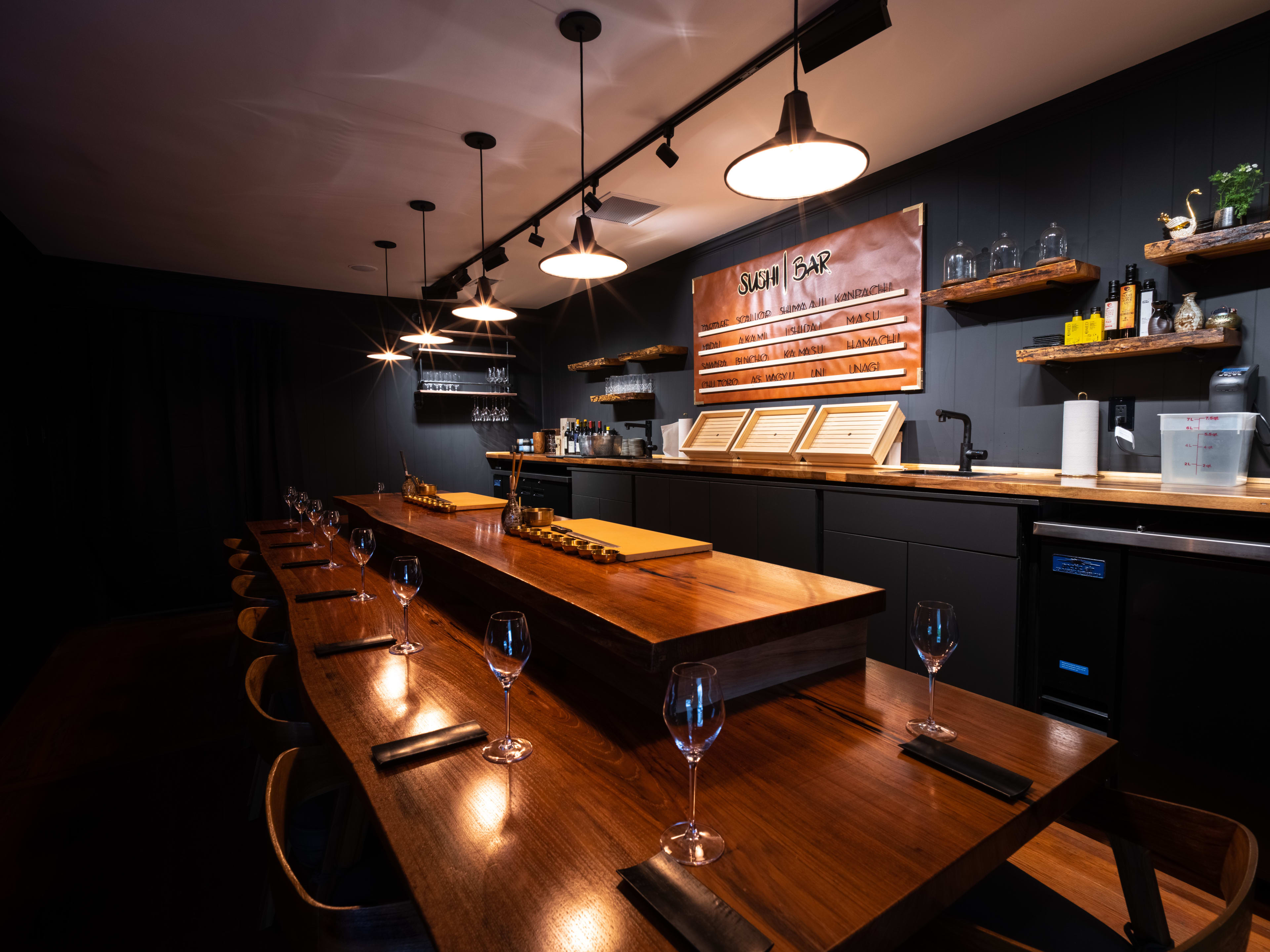ATXReview
Fish doesn’t get to be fish at Sushi Bar. Take, for example, the Hokkaido scallop, which gets topped with white soy sauce, white and black truffle salt, fermented garlic honey, dehydrated chives, and spherified truffles. It's like a trip to a self-serve froyo shop when you were a kid, where your cup ended up being more candy than froyo. This omakase-only East Austin spot over-accessorizes with foams, shaved truffles, everything bagel seasoning, kelp-cured butter, and even Terry Black's Barbecue sauce. The nigiri is gimmicky, and, ultimately, overblown, expensive, and not very good.
Sushi Bar follows a format that’s been spreading across the country over the last few years: a speakeasy-style omakase with a dozen seats at a counter, a near-comical use of blowtorches, and a barrage of 15-20 pieces of splashy, “new wave” nigiri, for north of $200 a head. But this nigiri is too overwrought and gussied up to be delicious, and the novelty wears off quickly. Somewhere around nigiri number five, you’ll mentally beg for a simple piece of aji with just a faint touch of tare.
photo credit: Raphael Brion
Uni gets finished with dehydrated red miso and wasabi. “This is pretty simple,” your sushi chef might tell you, unironically, “so you can appreciate the flavor of the uni.” Another problem is that the fish itself is often unevenly sliced and texturally off, like tough kanpachi, chewy butterfish, or unusually soggy otoro. The rice is gummy and a little hard, and simultaneously too loosely packed. Sometimes the nigiri falls apart on you as you pick it up. You don’t get a napkin for your lap here, so expect to wipe the rice bits up with your cold oshibori from the start of the meal, which is never removed from the counter.
A place serving nigiri that seems like it was conjured by AI makes sense: Sushi Bar is owned by a venture capital firm with investments in multiple restaurant brands, including an Italian spot in Nashville, a New Jersey/Italian-style deli with three locations in LA, and then Sushi Bar, which has expanded from its original Austin location to Miami, Chicago, and Dallas. It’s an easily replicable omakase concept that’s optimized to separate diners from their money.
photo credit: Raphael Brion
photo credit: Raphael Brion
photo credit: Raphael Brion
photo credit: Raphael Brion
The whole experience of eating here feels weirdly hostile, with the chefs and sommelier interrupting the dining room chatter dozens of times to explain what’s next. You’ll feel like you’re sitting in a lecture—and find it hard to keep up conversation with a dinner companion. Every few minutes you’re told, for instance, that the sparkling sake has notes of tropical fruit, or that the madai is crowned with shiso, house soy, peach and sea buckthorn jam, yuzu oil, Jacobsen sea salt, and sesame seeds. It's like a frenetic assembly-line, and brutally fast (90 minutes, in and out).
At a minimum of $210 per person—dinner costs $159 plus tax and a 22% autograt before drinks—the value isn’t there. The meal never feels celebratory, fun, or fitting for a special occasion. There’s no opportunity to catch up with an old friend to find out that they got a new puppy, or linger over an after-dinner drink or dessert on date night. At the 90-minute mark, you’ll be told to leave the dining room, and swipe a credit card in the foyer to settle up the sizable bill. Thankfully, at this point, the nigiri stops coming.
Food Rundown
photo credit: Raphael Brion
Omakase
photo credit: Raphael Brion
